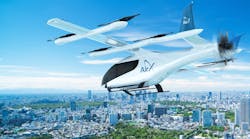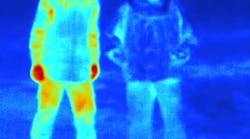Analysts at Forecast International in Newtown, Conn., project that countries worldwide will spend more than $35 billion on 33 different airborne and space-based electro-optical (EO) programs over the next 10 years.
According to its new study, “The Market for Airborne and Space-Based Electro-Optical Systems,” the supply of potential EO platforms will be abundant over the next decade. This analysis consists of three major market segments: the airborne EO sector, which accounts for 38.4 percent; the space-based EO programs, which represent approximately 38.2 percent; and the special-mission aircraft program, which accounts for the remaining 23.4 percent of this study.
The Airborne EO sector is an emerging market, supported by a number of major manufacturers, say Forecast International analysts in Newtown, Conn. Two Airborne EO programs alone account for almost $5 billion in sales, with targeting pods providing for more than $3 billion. Lockheed Martin, Northrop Grumman, Rafael Armament Development Authority, and Raytheon each manufacture a targeting pod, which has found favor with the U.S. military.
This market is expanding because of Operation Iraqi Freedom and the use of pods for nontraditional intelligence, surveillance, and reconnaissance (NT-ISR) missions, as well as close-air support missions. Lockheed Martin is the prime on the approximately $2 billion Target Acquisition and Designation Sight/Pilot Night Vision Sensor (TADS/PNVS) and its modernized version, Arrowhead. These electro-optical fire-control systems are designed for the AH-64 Apache and its international derivatives.
Space-based EO programs form the second major market segment. Two major space programs represent 90 percent of the space-based portion of this analysis. The Space Tracking and Surveillance System (SSTS) and the Space-Based Infrared System (SBIRS High) are planned constellations of satellites that rapidly detect and track ballistic missile launches from anywhere on Earth.
“Recent launches in North Korea highlight the need for these types of reconnaissance systems,” says Theresa Hartley, author of the study and defense-electronics analyst at Forecast International.
The special-mission aircraft portion, the report’s third major market segment, consists of only one program-Boeing’s YAL-1A Airborne Laser program. However, this technically challenging and expensive program is in danger of being canceled if any major program difficulties emerge or if funding is needed for higher-priority projects, Hartley says.
There are five major players in the airborne and space-based EO market. Dominating this market are Lockheed Martin, Boeing, and Northrop Grumman, which together represent nearly three-quarters of the market share of this analysis, Forecast International analysts say. However, Boeing’s revenues are tied to the Airborne Laser Program, and extensive cutbacks would affect the outcome of this analysis. BAE Systems and Raytheon round out the top five companies.
“These five corporations remain on top because they are prime contractors for multimillion-dollar projects, as well as subcontractors to each other’s major programs,” Hartley says.
Forecast International Inc. is a provider of market intelligence and Analysis in the areas of aerospace, defense, power systems, and military electronics. For more information, visit www.forecast1.com.


